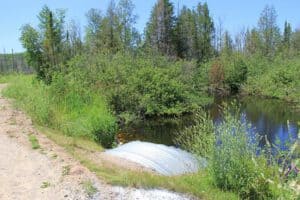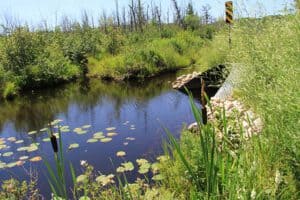Holms Road Stream Restoration
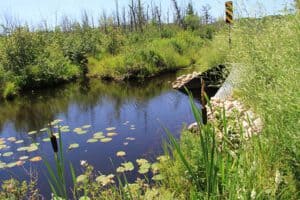 The Bear River, the largest tributary to Little Traverse Bay, originates at Walloon Lake and flows 12 miles to its confluence with the Bay after flowing through downtown Petoskey. Hay Marsh Creek flows into the Bear River as it passes through farmland and a cedar swamp. Erosion and stormwater runoff along the Bear River adversely impacts its water quality as well as that of the Little Traverse Bay.
The Bear River, the largest tributary to Little Traverse Bay, originates at Walloon Lake and flows 12 miles to its confluence with the Bay after flowing through downtown Petoskey. Hay Marsh Creek flows into the Bear River as it passes through farmland and a cedar swamp. Erosion and stormwater runoff along the Bear River adversely impacts its water quality as well as that of the Little Traverse Bay.
As an input to the Little Traverse Bay Watershed Management Plan, Tip of the Mitt Watershed Council conducted an inventory of all road/stream crossings within the Watershed. A total of 100 sites were inventoried for erosion, of which six were classified severe, 76 moderate, and 18 minor. The Little Traverse Bay Watershed Management Plan includes the following high priority recommendation:
Road/Stream Crossing Recommendation #5: Restore most severe road/stream crossings in cooperation with the Emmet and Charlevoix County Road Commissions.
The road/stream crossing at Hay Marsh Creek was selected because it was classified as “severe” in the road/stream crossing inventory that was conducted; construction work could begin promptly; the water quality benefits are high due to the severity of existing and potential erosion; and the opportunity to work with county road commission supported the partnership objective of the Great Lakes Restoration Initiative grant.
At the Holms Road crossing on Hay Marsh Creek, the stream flowed through an undersized culvert that was too short for the width of the road. Sediment was eroding off the road at both the crossing and the approaches. The small culvert was replaced with a properly sized culvert and side slopes were stabilized. The project was implemented through a sub-award to the Charlevoix County Road Commission (CCRC).
Project Video
Before Construction
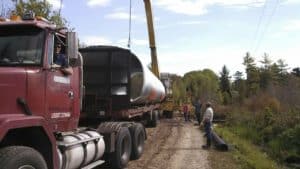
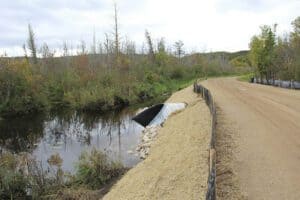
During Construction
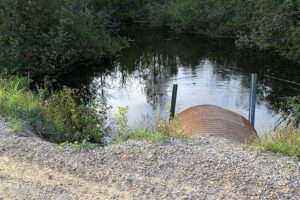
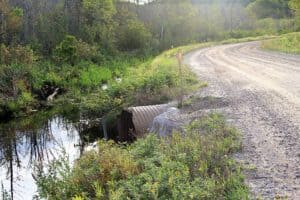
After Construction
